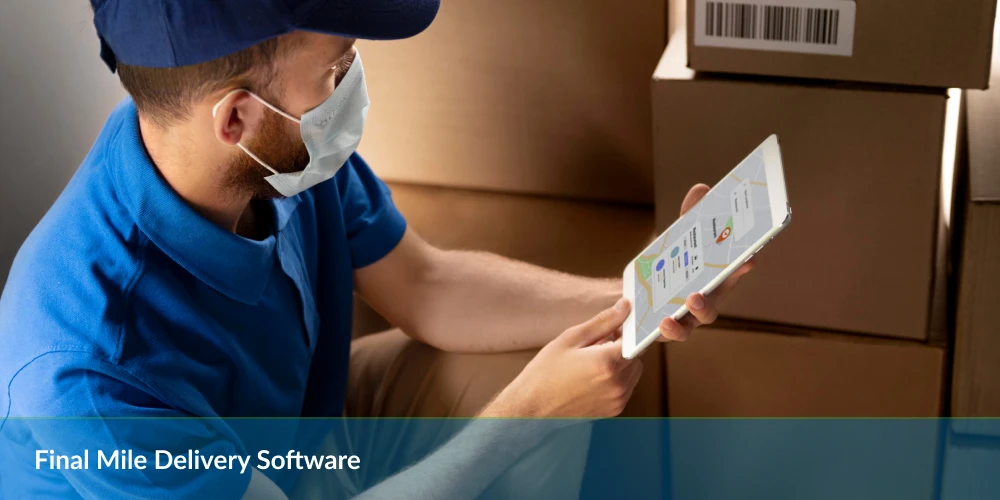Table of Contents
The pharmaceutical industry was on the verge of acknowledging the longstanding industry concerns when the COVID-19 pandemic struck. They were at the crossroads of embracing innovation in their business model and sticking to their roots. However, the pandemic amplified their concerns. As a result, the pharmaceutical industry finally had to embrace the pandemic-induced change, which offered them massive growth and increased their orders by 1000% in a short period.
Both B2B and B2C pharmaceutical markets implemented eCommerce to enable easy and transparent drug purchases (with genuine prescriptions), leading to higher demand for such offerings. Now that they have taken the plunge, pharmaceutical manufacturers and vendors must continue to evolve their eCommerce presence to compete in the fast-growing market.
The pharmaceutical industry’s transition to eCommerce is permanent, and it is expected that the entire pharmaceutical industry will be worth $1trillion by 2022. On the eCommerce side, the market is expected to reach over $435 billion by 2025.
eCommerce Giants are Taking the Lead
In the past couple of years, eCommerce giants like Amazon have invested heavily in their online pharmacy businesses. Amazon allows patients to order prescription drugs from certified online pharmacists on their platform. While they are one of the first players to invest in this segment, they certainly won’t be the last.
Customers in the B2C segment can now order prescription drugs online from the comfort of their homes. However, in the B2B context, the change is more prominent as comprehensive digital pharmacy platforms can enable their clients to compare their orders based on different factors like availability of drugs, pricing, distance, delivery times, and more.
As the eCommerce supply chains in the pharmacy sector evolve, drug manufacturers will be forced to offer competitive pricing. Why? Because digitization in any sector increases transparency and gives more bargaining power to the customers, who would be inclined to decrease their spending on securing prescription drugs.
How is the Future of Pharmacy Transforming?
Innovations in life sciences and the implementation of new technologies are disrupting the healthcare value chain. Lately, there has been a paradigm shift from traditional healthcare practices toward overall well-being. As a result, people strive for better access to healthcare providers and receive customized products based on their diagnosis. This change continues to generate more opportunities for digital pharmacies and enables pharmacists to evolve their roles.
Various technological breakthroughs are happening in the world of medicine at a record pace. Today, pharmaceutical companies are leveraging the power of artificial intelligence (AI) and robotics to capture crucial data and use it to create precise treatments and medications for patients worldwide.
But before we dive into the evolving role of pharmacists in the e-pharmacy segment, let’s look at some of the most prominent innovations happening across life sciences:
- Development of smart mirrors to detect health variations using cameras and breath analysis
- Use of smartphone sensors to create home diagnostic tools for the detection of problems like hypertension, diabetes, urinary tract infections, and more
- Alternative therapies like food-as-medicine methodology using the gut microbiome to help patients maintain their glucose levels
- Increase in the use of robots like an ingestible origami robot to treat wounds inside a patient’s body
These are just a few innovations that are shifting the focus from treat-as-required to a holistic well-being approach. Pharmacies will have to factor in such dynamics to create winning strategies in the current market and find ways to improve through strategic investments in the future.
The New Role of Pharmacists
Many pharmacies still operate on a legacy-based business model and are on the precipice of embracing technologies and customer service innovations. In the future, a pharmacist will have to go beyond counting pills and addressing prescriptions. On top of operating as licensed pharmacists, they will need to become highly trained and trusted medical professionals.
Innovation cycles in the pharmacy business are causing significant disruptions, and that too at a very rapid pace. While you are aware of the benefits of e-pharmacies, some areas of the pharmacy industry are on the cusp of new technological advancements. Let’s take a look:
- Reduced dependency on chemical and biological methods for diagnosis and treatment of diseases
- Increased focus on employing nutraceuticals, gene therapy, digital therapeutics, and programmable bacteria backed up by clinical research
- Better distribution of medical supplies through 3D printing kiosks at pharmacies with an option of same-day-delivery using autonomous modes of transportation
- Implementation of AI and automation to help pharmacists evolve into care providers and eventually manage chronic diseases by prescribing acute medications
- Leveraging massive data sets with devices connected through the internet of things (IoT) and using cloud-based algorithms to get real-time insights into patient’s daily health
Even in the present ecosystem, pharmacists are trusted resources, and if they want to stay in business in the future, they will have to grow in their role or face disintermediation.
We are already witnessing robots administering doses to patients and 3D printers being used to create multivitamin supplies tailored to every individual in a matter of minutes. So, as the demand for physicians increases, pharmacists might become the next generation of primary care providers for treating conditions like asthma, diabetes, hypertension, and more.
Read more: Everything You Need To Know About Pharmacy Delivery Business
Future of Online Pharmacies
E-Pharmacies are transforming into a marketplace where vendors find new ways to validate the prescriptions and deliver them quickly. However, as more sellers enter the online pharmacy market, the FDA has tightened restrictions to curb the rise of rogue pharmacies working without proper licenses and selling dangerous drugs to customers.
So, to enter the e-pharmacy market, sellers must ensure that they have the required licenses and meet all the requirements laid down by the FDA. Another challenge the sector faces is the diversion of drugs being delivered. Since many packages are taken from suburbs, there is a chance that the opioid epidemic might exacerbate in different parts of the world.
As these challenges surface, the pharmaceutical industry can eliminate them with innovations that streamline the purchase of prescription drugs online. By implementing delivery management systems and white-glove delivery in the process, sellers can monitor the packages and establish a clear line of communication with their customers.
E-Pharmacies allow the sellers to reach patients in rural areas who might not have any medical facilities nearby. In addition, once the online pharmacies analyze the potential risks, they can expand their services into areas with extensive demand for prescription drugs to reduce the turnaround time for each order.
If the pharmaceutical manufacturers and distributors want to become a prominent name in B2B and B2C pharmaceutical eCommerce, they have to consider moving to digital platforms immediately.
The changes are inevitable, and it is just the question of who first makes it big in the pharmaceutical eCommerce industry. Technology adoption is rapid, and with the inclusion of delivery management systems like NetworkON, the idea of e-pharmacies seems to be an economically viable option.
Integrating E-Pharmacies With a Delivery Management Solution
Managing logistics is one of the essential parts of any eCommerce business. Building customer trust is crucial and even more so in the healthcare sector. If you are ready to jump on the e-pharmacy bandwagon, then make sure that the logistics arm of your business is completely automated.
NetworkON is an AI-powered delivery management solution that caters to different industries and allows organizations of all sizes to manage their logistics seamlessly. Stay on top of every order that is out for delivery and maintain constant communication with your customers.
Here are a few key features of NetworkON that will help you transform your e-pharmacy business into a successful brand:
- AI-powered route optimization to ensure the delivery teams receive the shortest routes and deliver orders promptly
- Geofencing enables the orders to be assigned to the delivery personnel in a specific area
- Real-time tracking of orders helps maintain transparency in the delivery process and ensures that the delivery teams are doing their job proficiently
- Easy fleet management capabilities to gain oversight of the activity of your delivery team
- Automatic order assignment reduces the time spent on assigning the orders manually and allows your admins to focus on important tasks
- NetworkON establishes a clear line of communication between the admins, customers, and delivery personnel allowing them to reschedule deliveries quickly if needed
- Delivery teams can generate digital proof of delivery using a variety of methods, thus reducing the paperwork and saving you money
- Regular in-app notifications about incoming delivery tasks to delivery partners when they are in their concerned geographical location
- Extended support for your business with multiple third-party integrations using the NetworkON marketplace
- Easy-to-execute functionalities to execute white-glove delivery for high-end pharmaceutical products
These are just a few of the features that NeworkON has to offer. To know more about the comprehensive list of features, click here.
Next Step?
Take your e-pharmacy business to new heights with NetworkON today. Email us at info@networkon.io for a free demo or visit our website to learn how NetworkON is helping different companies to achieve their goals.





0 Conversations